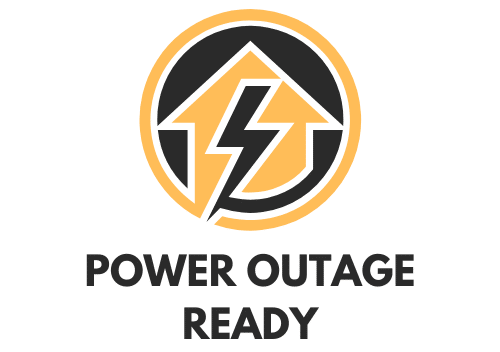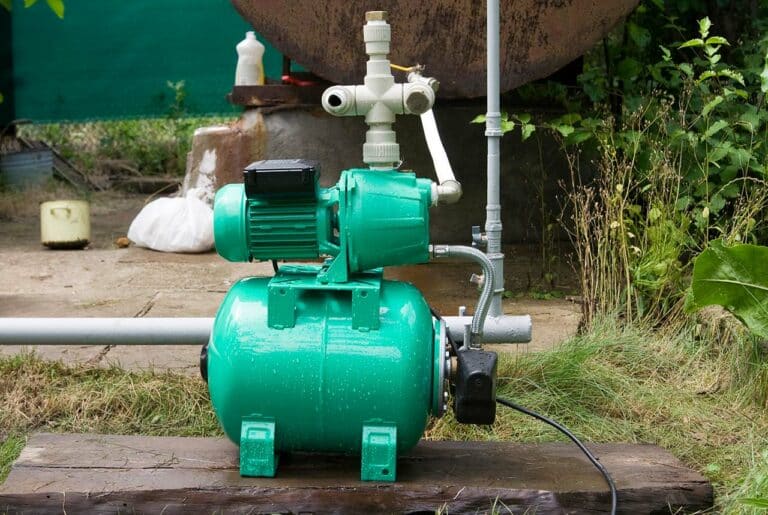Can You Flush A Toilet Without Power? (What To Know)
When the power suddenly goes out, you might find yourself wondering if you can flush your toilet without electricity. Well, the good news is, in most cases, you can. The ability to flush your toilet during a power outage depends primarily on your water supply system.
For those living in areas serviced with municipal water, you should be able to flush your toilet without any issues, as the water comes from large holding tanks and doesn’t rely on electricity. The water pressure to and from treatment plants usually remain working during power outages. But, if you rely on a well for your water supply, the situation may be different.
While you may still be able to flush your toilet at first, there will likely be a limit on how many times you can do it during a power outage. So, let’s delve deeper into how your toilet fills back up after a flush, and why toilets might stop working without electricity.
Impact Of Power Outage On Toilet Functionality
Major power outages typically don’t impact your toilet’s functionality if you’re connected to a municipal water supply and have a standard, gravity-flush toilet.
It’s different, though, if you rely on well water and use a pump to draw water into your home. Once the power is out, that pump stops working, and, depending on how long an outage lasts, you may experience loss of water supply. In that case, your toilet will fail to flush as usual.
That doesn’t mean you don’t have options. One simple solution to flushing a toilet in a blackout is to fill a bucket with water and pour it directly into the toilet bowl. The force of the water can help flush the contents down the drain.
If you rely on a water pump system for your water, it’s a good idea to keep some extra water in jugs or buckets for times when the power is out.
Different Types Of Toilets And Their Dependence On Power
When it comes to flushing toilets during a power outage, the type of toilet you have also makes a difference. Let’s take a quick look at some common toilet types and their dependence on electricity.
Upflush Toilets: Also known as macerating toilets, upflush toilets use a pump to grind and move waste through a thin pipe. They’re great for adding a bathroom to a non-traditional space, like a basement. However, since they rely on a pump, you won’t be able to flush an upflush toilet during a power outage without a battery backup in place.
Low-Flow Toilets: These toilets use less water per flush, but they don’t depend on electricity. So, even when the power is out, you can still use your low-flow toilet without any issues.
Tankless Toilets: Tankless toilets rely on water pressure, not gravity, to flush waste away. This means they’re not dependent on electricity. As long as you have water pressure during a power outage, you can use your tankless toilet without any problems.
Smart Toilets: Smart toilets come with a variety of high-tech features, like heated seats, self-cleaning options, and even bidets. While some features require electricity to operate, the basic function of flushing should still work as long as there’s water pressure. However, you won’t be able to enjoy the extra features during a power outage without battery backup.
Toilet Functioning In Different Residential Settings
In different residential settings like apartment buildings and homes connected to municipalities, the way your toilet functions without power may also vary. As power outages affect many aspects of daily life, it’s important to understand how your toilet operates under these circumstances.
If you live in an apartment building, chances are that the water supply may be impacted by a power outage, especially if your building relies on electric pumps to maintain water pressure. In this case, you might not have adequate water supply to flush your toilet. However, if the water pressure remains unaffected, you can flush your toilet without issues.
Homes connected to municipal sewer systems typically don’t have any problem flushing toilets during power outages. This is because the sewer system doesn’t rely on electricity, so you won’t face any septic or drain field issues. You should be able to go ahead and flush as usual.
In the event that your water supply IS disrupted during a power outage, don’t panic. There are alternative ways you can flush your toilet. One simple method is pouring a bucket of water (1-2 gallons for newer toilets, 3-5 gallons for older models) into the toilet bowl to manually start the flushing cycle.
To be prepared for water supply disruptions, consider collecting water in advance. You may collect water well ahead of time using a rainwater collection or similar system, or collect water in a bathtub, sink, or containers as soon as an outage hits.
Remember, power outages can happen unexpectedly and affect various aspects of your daily life. So, being aware of how your toilet functions without power—whether you live in an apartment building or a house connected to a municipal sewer system—is essential to being prepared.
How To Flush A Toilet Without Electricity
For most people, flushing the toilet won’t be an issue during a power outage. But if it becomes one, here’s how you can flush your toilet when the power is out:
First, lift the toilet tank lid and take a look.
Next, grab some water – fill a bucket with at least a gallon, ideally from those emergency stores you’ve been collecting.
Pour the water directly into the bowl while maintaining a steady and continuous flow. The force of the water you pour in will simulate the pressure of a normal flush.
Remember, the more water you use, the stronger the flush will be. So, if it’s a more *ahem* solid situation, you might need a bit of extra water.
As for how many times you can flush a toilet without power, before resorting to adding water, depends on your water supply and the type of flushing system. Gravity-fed systems can be manually flushed multiple times, while others might need electricity for refilling.
If you’ve got a septic system with a level or downhill drain field, you’re likely to be good to flush for the length of an outage. Just be mindful of your water usage, and conserve when you can. That way you only have to break into your emergency stores if absolutely necessary, which is always ideal during any emergency.




